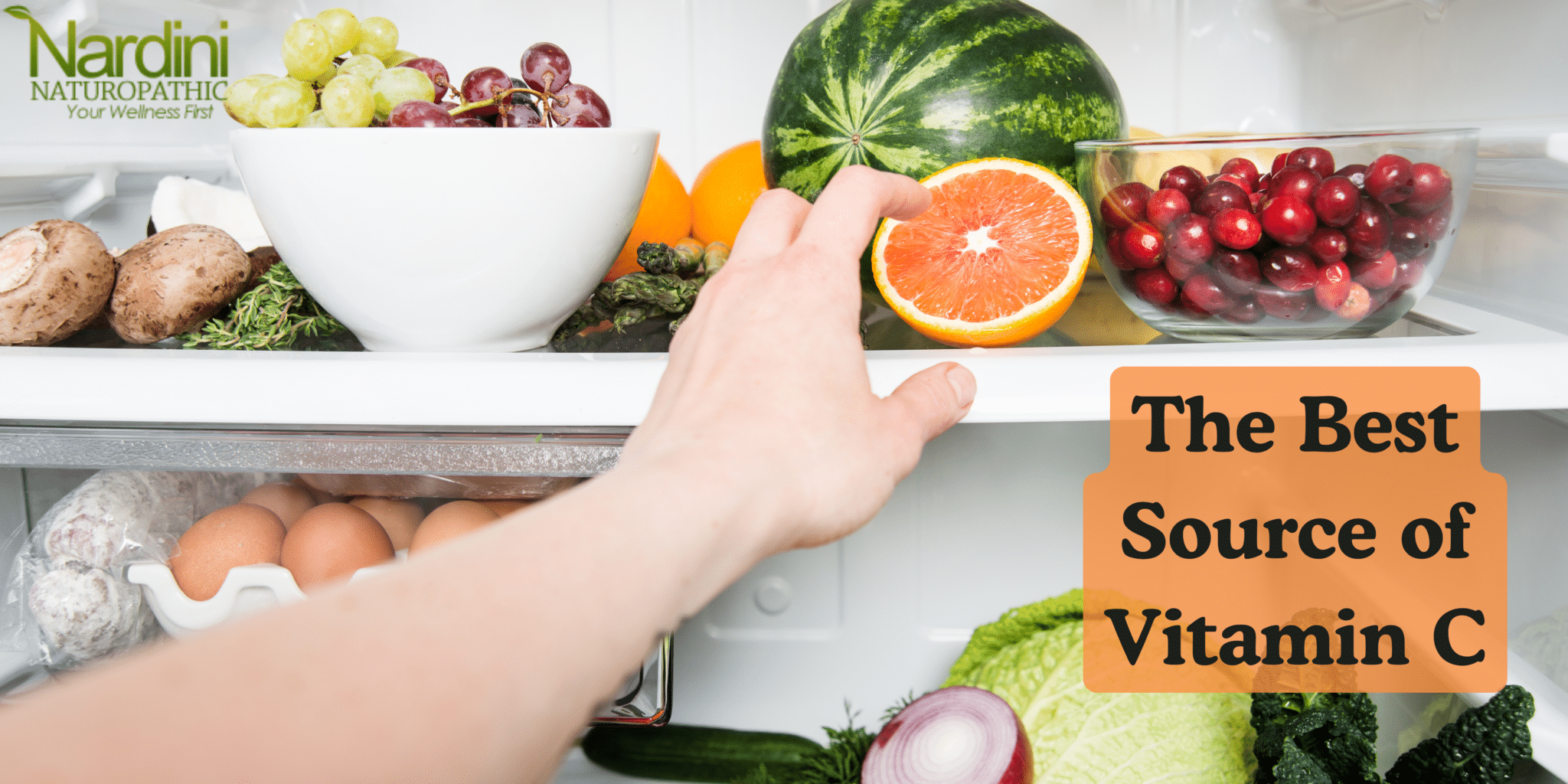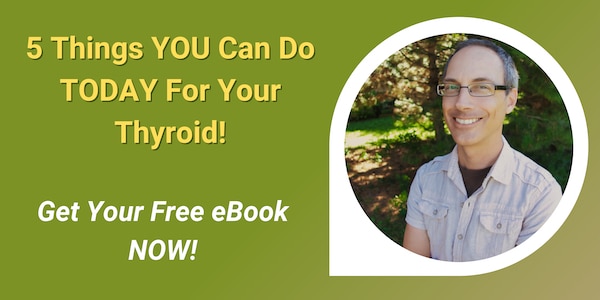Vitamin C is an essential nutrient that many of us take for granted. Getting enough in the diet may seem like a trivial thing, but you may be surprised at how easy it is to neglect this important vitamin. Have a look at my previous article about the many health benefits of Vitamin C and some of the best food sources.
In a nutshell, why is Vitamin C so important? Research shows that it:
- Supports the cardiovascular system to prevent heart attack and stroke
- Helps to build healthy skin and joints
- Keeps the immune/detoxification system well-functioning
- Helps to maintain healthy bones and teeth
- Improves iron absorption
Sometimes, it becomes necessary to add Vitamin C to the daily routine as a supplement. This may be because of a deficiency in the vitamin, to use in higher doses as a therapy, or simply to ensure that you’re getting your daily amount.
Many people in my practice ask me what the best source of Vitamin C is. I will try to answer that question by presenting some of the most common forms of C and the benefits and drawbacks of each (ratings for cost, safety, and quality are out of 5). At the end, I’ll give you my verdict!
1. Standard Pharmaceutical Grade
Most Vitamin C that you can find at pharmacies and health food stores is made from pharmaceutical-grade ascorbic acid, the chemical name of Vitamin C. Contrary to popular belief, this type of Vitamin C is not made from oranges.
Genetically modified (GMO) corn is the most common starting material and chemicals, such as acetone, are employed to convert the glucose sugar extracted from the corn into ascorbic acid. I’m sure you can see the problems already – this is synthetic Vitamin C made from genetically-altered crops using toxic chemicals. If this vitamin is supposed to be good for your health, isn’t that defeating the purpose?
There’s another problem with this form of Vitamin C. In nature, ascorbic acid does not occur as an isolated chemical. In foods that naturally contain Vitamin C, there are a variety of “cofactors” that accompany the ascorbic acid and amplify its health benefits (more on this later). Since pharmaceutical-grade ascorbic acid is not naturally occurring and is synthesized, these beneficial cofactors are not present in the final product. Some manufacturers try to add a bit of these in at the end, “…with bioflavonoids”, for example. This is not the same as having the full range of cofactors present from the beginning.
So…toxic manufacturing processes and a limited quality product. Not off to a good start.
The one thing pharma-grade C has on its competitors is price. As usual, you get what you pay for.
2. Buffered Ascorbic Acid (Ascorbate)
Another common complaint with pharmaceutical-grade Vitamin C is that is can be hard on the stomach, since it is an acid. Some manufacturers have tried to remedy this by making what is known as “Buffered Vitamin C”.
Buffered Vitamin C is made by mixing ascorbic acid with a mineral. The most common minerals used to “buffer” the ascorbic acid are Calcium, Magnesium, and Sodium. The buffering process has the effect of making the Vitamin C less likely to cause side effects, like stomach upset, for example. This allows for a larger dose of Vitamin C to be given without unwanted symptoms.
However, the starting material is still ascorbic acid, the synthetic chemical I mentioned above. Although buffered C may be less harsh on the stomach, the processed nature of the product and the lack of cofactors are issues.
3. Liposomal C
Another challenge with Vitamin C supplements, especially with large doses in the 500-1000 mg range, is that it’s nigh impossible to absorb all of it in one go. If your intake of Vitamin C is above 1000 mg per day, it is estimated that less than 50% of it is absorbed into the body1. Some manufacturers will try to use capsules with less Vitamin C but it’s difficult to compete with a Vitamin C tablet that has a full 1000 mg in it and the bottle recommends that you take one a day.
Loading up on extra C to make up for the poor absorption is not always a good idea. Too much Vitamin C can result in stomach cramps, bloating, and diarrhea.
A more effective way around the absorption issue is to process the ascorbic acid into a liposomal form. Liposomes are tiny spheres of phospholipids (fats with phosphorus tails) that are hollow inside. This allows the manufacturer to place a vitamin in the centre of the liposome and have it “carry” its payload through the gut, delivering it right to the cells of the body where it’s needed. This serves to not only make the vitamin more absorbable but also more bioavailable to the tissues so it can be used by them.
Liposomal Vitamin C has been shown to be over 75% more bioavailable than non-liposomal ascorbic acid2. So, you can take less liposomal C and still get an effective dose without risking some nasty gastrointestinal side effects.
Once again, though, we have the same problem of our starting material. We’re still using synthetic ascorbic acid and the liposomes themselves are often made with heavily processed seed oils, like soy and corn oil. There are either minimal or no cofactors. And the expense of manufacturing the liposomes can significantly add to the cost of the supplement.
4. Food-Form Vitamin C
A small number of companies are making supplements, including Vitamin C, using a method that results in a food-based or “food-form” product.
This process involves the use of pharmaceutical grade ascorbic acid, along with other nutrients and food material (like orange peels), which are added to a culture of bacteria or yeast. The microorganisms feed on the nutrients, incorporating them into their cell structure. The bacteria or yeast are then broken down and filtered before being put into tablet form. The end result is a Vitamin C supplement that contains ascorbic acid accompanied by cofactors that were either added to the original mixture or manufactured by the micro-organisms. This is as close to getting Vitamin C from food as you’re going to get without just eating food. But, why not just get the Vitamin C from food?
The advantage of taking a food-form Vitamin C supplement over getting the C from food is the doses you have access to. A medium-sized orange contains about 68 mg of natural ascorbic acid3. A typical tablet of food-form Vitamin C can contain 250-300 mg. So, we’re talking roughly 4-5 times more. If you can take one pill instead of 5 oranges a day, that may be attractive to some.
Although food-form Vitamin C is superior to the previously discussed formats with regard to the cofactors it contains, it still uses pharmaceutical grade ascorbic acid as a starting material. As expected, the processing involved does tend to drive up the product’s cost.
5. Food
Last on the list is the tried-and-true form of Vitamin C – the kind you find in food.
The main advantage of Vitamin C in food is the co-occurrence of natural cofactors. These include anthocyanins, flavanols, and ellagic acid which help to “regenerate” the Vitamin C once inside the body.
With isolated ascorbic acid, the molecule enters the body, performs its antioxidant function once, then it’s done, making its way down the toilet with the urine. Talk about a “one hit wonder”. Manufacturers try to overcome this limitation by loading up on the dose. However, as we saw above, it’s the law of diminishing absorption with high doses of Vitamin C.
When other antioxidant cofactors are present with the ascorbic acid, as in whole foods, the Vitamin C can be continually returned to its original state, allowing it to work over and over again. Some claim that it’s not actually the ascorbic acid that is the main antioxidant workhorse but, rather, these so-called “cofactors”4.
So, where do I get me some of this natural Vitamin C? It’s where you’d expect it – in fruits and vegetables. If we want to get the most Vitamin C bang for the buck, what foods are best?
- Camu camu berry 4977 mg/cup
- Acerola cherry 1644 mg/cup
- Amla berry 793 mg/cup
- Rose hip 707 mg/cup
- Guava 377 mg/cup
- European black currant 203 mg/cup
- Kiwifruit 167 mg/cup
- Bell pepper 152 mg/cup
- Lemon 112 mg/cup
- Strawberry 98 mg/cup
- Orange 96 mg/cup
- Broccoli 81 mg/cup
- Tomato 55 mg/cup
Keep in mind that these are doses of ascorbic acid per cup5. You aren’t likely to eat a whole cup of rose hips every day. However, organic camu camu is easy to find in powder form (and in capsules), providing about 90 mg of natural, whole-food Vitamin C in 1 tsp. These amounts can’t compete with the doses present in pharma-grade products, but the quality advantage is considerable.
The Verdict
If you’re looking for a complete, bioavailable, whole-food Vitamin C source, there is no doubt that foods and minimally processed supplements made from them (like berry powders) are the way to go.
However, the doses of ascorbic acid in foods don’t really compare with what you can get in a regular pharmaceutical grade Vitamin C supplement.
It begs the question: do we actually need thousands of milligrams of ascorbic acid every day?
The RDI (Recommended Daily Intake) is 90 mg and only a small amount of lemon or lime juice was needed every day to prevent scurvy (Vitamin C deficiency) in sailors of yore6. Of course, the RDI should be considered a minimal amount to prevent severe disease. Optimal health will likely require more, depending on the individual’s age, lifestyle, and current health concerns.
Certainly, there are circumstances where high doses of oral Vitamin C may be needed – during heavy metal detoxification, for example. In such cases, liposomal C or larger doses of the buffered or regular stuff may be necessary to bind and flush out the toxins.
If you like the idea of a food-based Vitamin C but must have high doses of ascorbic acid, a food-form C may be a good option.
For most of us that are trying to get a high-quality Vitamin C for the purpose of maintaining good health, let food be thy medicine!
1. https://ods.od.nih.gov/factsheets/vitaminC-HealthProfessional/#en4
2. https://pubmed.ncbi.nlm.nih.gov/32901526/
3. https://fdc.nal.usda.gov/fdc-app.html#/food-details/169097/nutrients
4. https://www.drroyallee.com/what-is-a-vitamin/
5. https://www.myfooddata.com/articles/vitamin-c-foods.php
6. https://health.mil/News/Articles/2022/01/10/The-British-Limeys-Were-Right-A-Short-History-of-Scurvy
Book An Appointment With Nardini Naturopathic
Are you worried you aren’t getting enough vitamin C?
Or perhaps you’d like a review of your overall diet to see where you could be doing better.
Maybe you have food allergies or intolerances and worry you aren’t getting enough nutrients because of your restricted diet.
I’m Dr. Pat Nardini, a naturopathic doctor who offers nutritional counseling services to help ensure all of those gaps in your diet are filled, and that you’re getting enough of all the important nutrients which your body needs to function at its best.
Contact me today for more information, or book a free 15-minute consultation where I will help you understand how naturopathic medicine can help you.
If you have questions about naturopathic medicine, or you’d like to take your first step into the world of naturopathy, contact us at Nardini Naturopathic, and let’s book an appointment.
Yours in health,
Dr. Pat Nardini, Naturopathic Doctor
320 Danforth Ave suite 206,
Toronto, ON, M4K 1N8
-https://g.page/NardiniNaturopathicDanforth
Dr. Pat Nardini, ND is a licensed doctor of naturopathic medicine in Toronto, Ontario. He offers science based natural health solutions with a special focus on thyroid conditions.


